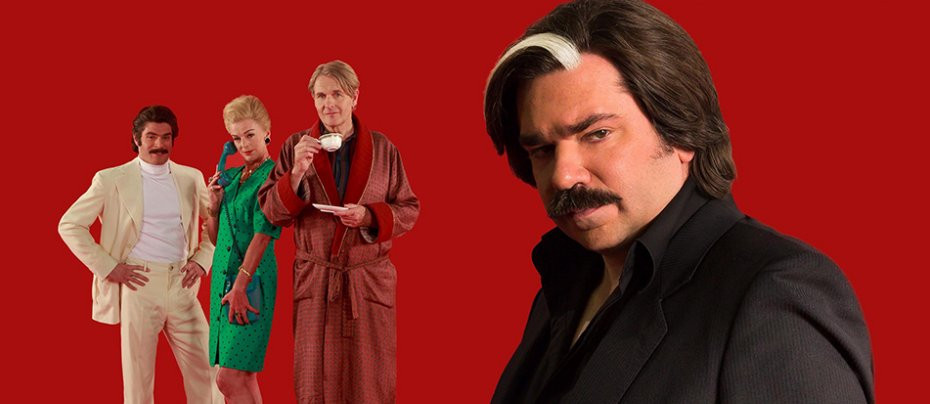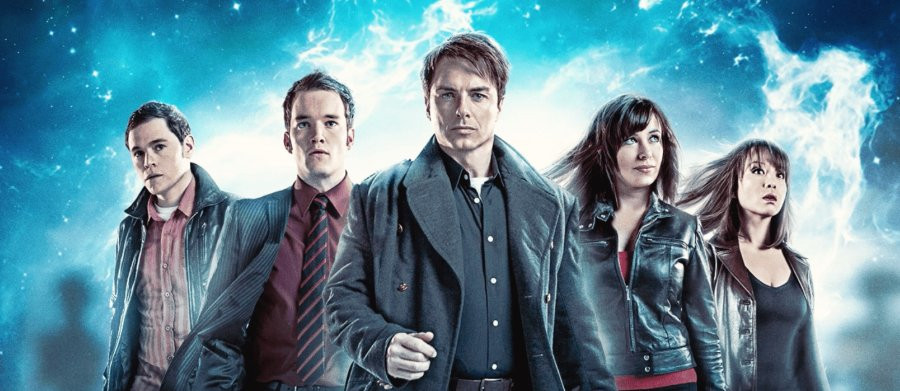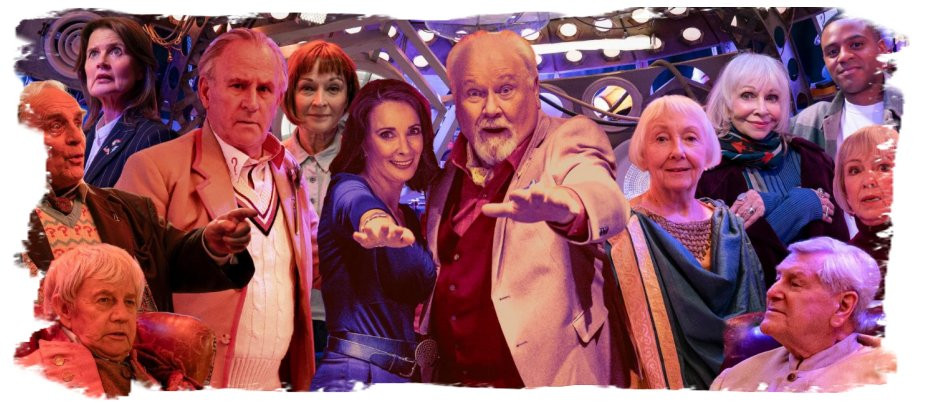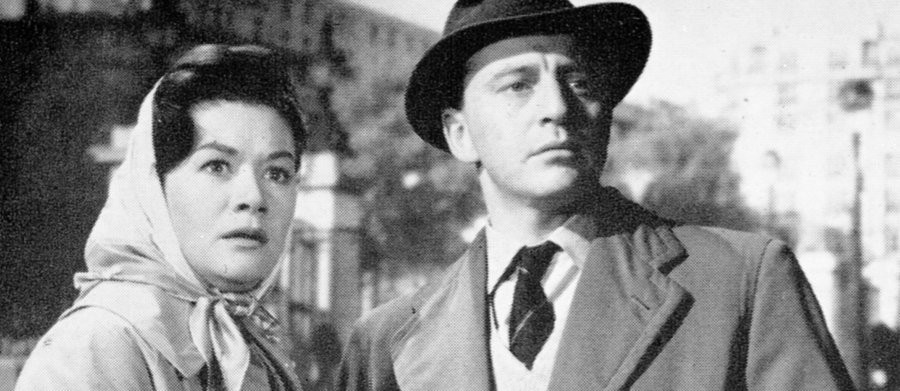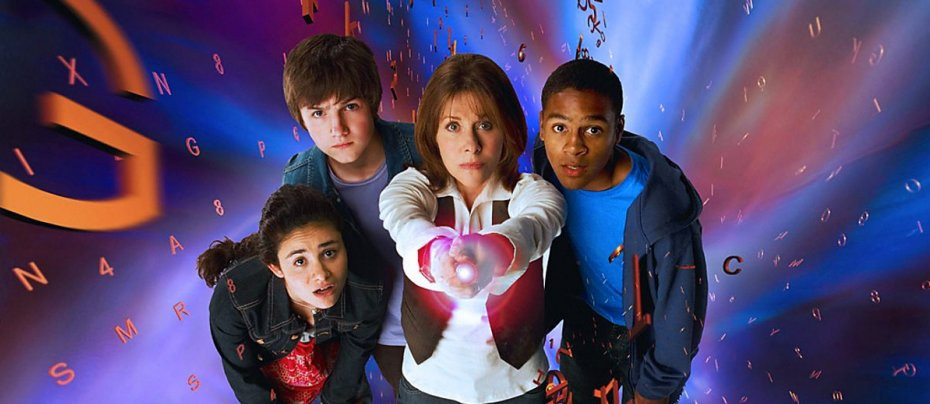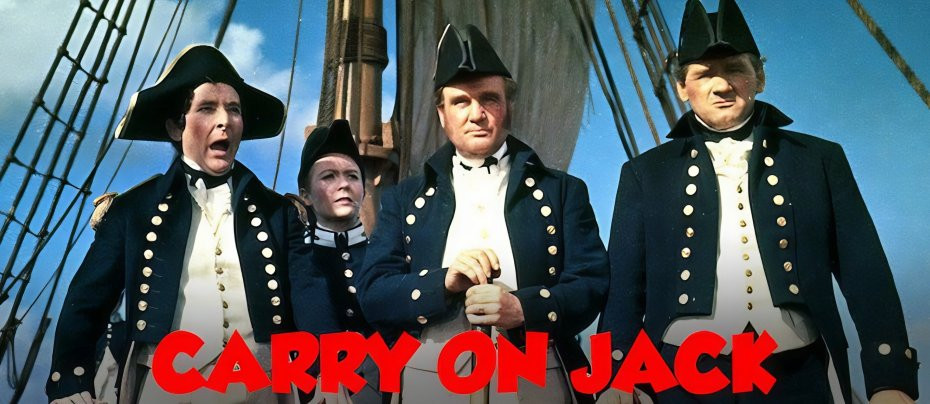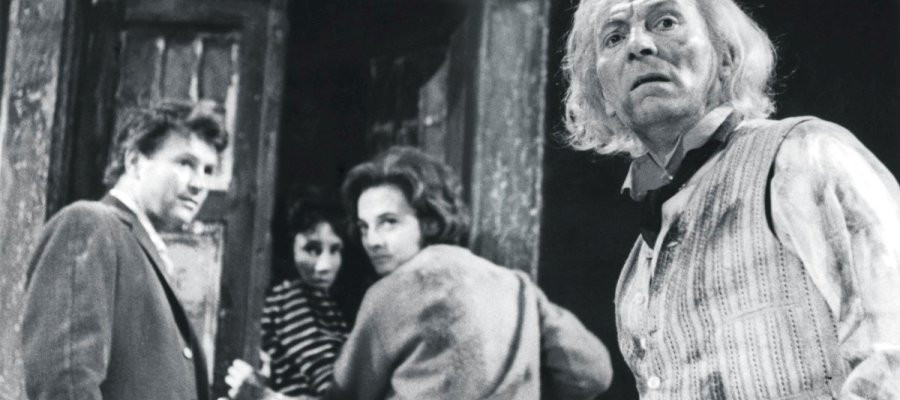Colony in Space:
Christopher H. Bidmead’s Doctor Who serial ‘Frontios’ in context
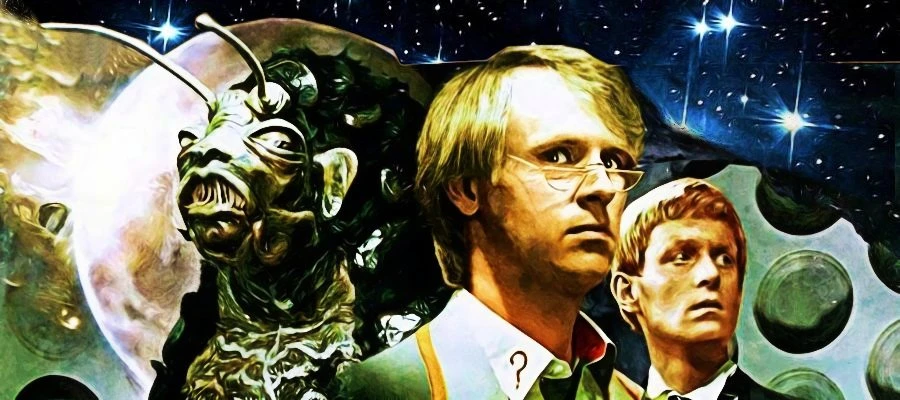
by Andrew O’Day
This article places Christopher H. Bidmead’s Doctor Who serial ‘Frontios’ (1984) and its novelisation in relation to Bidmead’s other narratives ‘Logopolis’ (1981) and ‘Castrovalva’ (1982), their novelisations, Bidmead’s script edited serials, and other Doctor Who’s and science fiction. Connections can be detected whether Bidmead was conscious of these or not. Like the Doctor Who serial ‘The Ark’ (1966), by Paul Erickson and Lesley Scott, ‘Frontios’ features the last humans who have fled from the doomed Earth (Barnes 2010: 50). ‘Frontios’ not only deals with the idea of limits, as the title conjuring up the frontier suggests, and which Bidmead was also interested in with ‘Castrovalva’, but there are many other points to be made about this colony in space.
Bidmead’s interest in science, evidenced in his written scripts ‘Logopolis’ and ‘Castrovalva’, for instance, resurfaces in ‘Frontios’. The chief science officer Mr Range tells the Doctor that the colony ship was brimming with ‘failure-proof technology’ that ‘failed’ and that ‘nothing survived the crash’. A comparison can be made with Terrance Dicks’ ‘State of Decay’ (1980) which Bidmead script-edited: like Range, Kalmar was a scientist (see O’Day and Baston 2023) and just as the Tractators cause a society to become backward, the Great Vampire, with its servants, plunged a society into a medieval state where science was banned. (Bidmead’s interest in computing, seen in his earlier serials, also resurfaces where the Doctor tries to fool the Tractators into thinking Tegan was an android which was useful for tasks such as word-processing (see Paul Scoones, DVD Notes)).
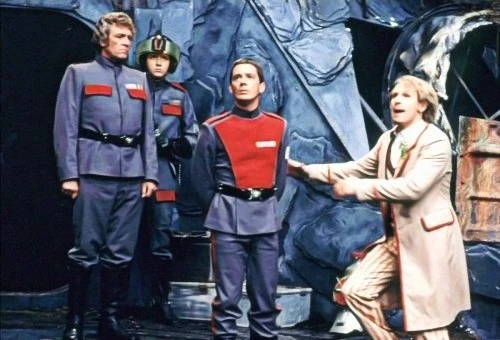
In ‘Frontios’ nature can be seen as threatening with the bombardments inflicted on the colony. As Brazen says to the Warnsman, ‘I don’t like the look of this sky’. More is made of hostile nature in the novelisation of ‘Frontios’ than in the televised serial: the excavation machine is described as ‘whirring’ and tossing ‘like a ship caught in a storm’ (1985: 125) and when the Gravis is pulling the Doctor’s TARDIS back together, he sways his body ‘like a tree in a gale’ (1985: 138). However, near the end of the novelisation there is the restoration of a calm nature: ‘Sunlight was streaming down on the little settlement from a sky so clear and blue’ (1985: 141). Anthony Brown also notes that in the final episode of ‘Logopolis’ there is the poignant moment of what could be Earth’s final dawn (1995: 17). Meanwhile, in the third part of ‘Castrovalva’ there is a lyrical moment of a harmonious morning (Brown 1995: 17) with bird song. The town seems idyllic unlike the settlement of Frontios even though this is illusory in ‘Castrovalva’.
There is a warning sign in ‘Frontios’ just as there was in ‘Logopolis’ and ‘Castrovalva’. In ‘Frontios’, upon seeing the bleak sky, the Warnsman sets off the alarm that there is about to be a bombardment, while in ‘Logopolis’ Bidmead introduced the notion of the Doctor’s TARDIS’ Cloister Bell which sounded to warn of universal catastrophe. The Cloister Bell again sounded in ‘Castrovalva’ when the Doctor’s TARDIS plunges back in time towards Event One.
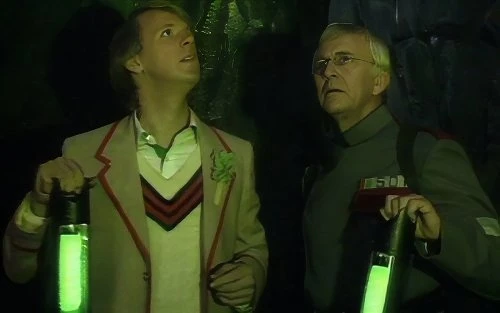
In seeing Frontios as constantly bombarded, there is a medical shelter in the colony. Furthermore, the Tractators attack is described using medical language: Turlough with deep ancestral memory says that when the Tractators invaded, his ‘home was an infection’ and speaks of the creatures as ‘spreading the infection’. So, there are not only the injuries inflicted on the colonists by the bombardments.
As Bidmead has noted (see In Vision 73 [1997]: 4 ‘Production’), he puts the Doctor in a vulnerable position in ‘Frontios’ just as was the case in ‘Castrovalva’. In ‘Castrovalva’, the Doctor is carried to Castrovalva in a small box, the Zero Cabinet. In ‘Frontios’, meanwhile, it appears that the TARDIS has been destroyed, so the Doctor is marooned on the planet, in the same position as the colonists. The idea here is similar to producer John Nathan-Turner getting rid of the Doctor’s Sonic Screwdriver, which facilitated escape like a magic key, in the Eric Saward serial ‘The Visitation’ (1982). However, there is a big difference between ‘Castrovalva’ and ‘Frontios’: in the former the Master delights in making the Doctor vulnerable whereas in the latter it is the whole colony that is under attack. In ‘Frontios’, the Doctor is caught up in an attack on the colony more widely. Whereas in ‘Castrovalva’, the Doctor is in need of medical help, in ‘Frontios’, he offers assistance.
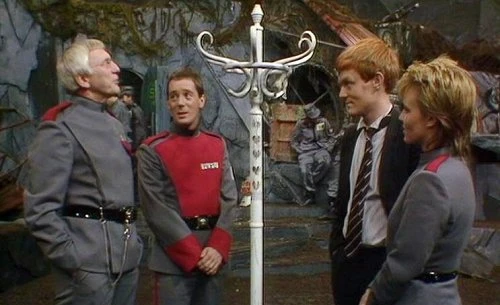
Bidmead draws out the society in ‘Frontios’, just as he did in ‘Castrovalva’, however. In the former there were many Castrovalvan women gathered outside the Doctor’s room to make sure he was in good health. In ‘Frontios’ colonists gather at the door of the medical shelter, first out of curiosity as to who the new arrival, the Doctor is, and later out of concern believing Plantagenet to be dead.
The society is divided into Orderlies and Deserters as discussed next. The meaning of words is important. Brazen says at one point ‘You’re an Orderly so keep order’. In the novelisation, Brazen says that putting a stop to ‘crass behaviour’ is ‘the meaning of the word’ Orderly (1985: 72). (Similarly, the meaning of the words Gravis and Tractators are significant: the word Gravis suggests gravity while, as Scoones notes in the DVD Infotext, as a race of gravitators, tractare (to drag) is the root of the English word traction and it is this that is key and not that Tractators means the writer of legal tracts.) In Bidmead’s other serials, ‘Logopolis’ and ‘Castrovalva’, the meaning of words like Logopolis (city of words), Monitor, Castrovalva (castle with a folding door), Portreeve (doorkeeper) and Shardovan (of shards) were also significant.
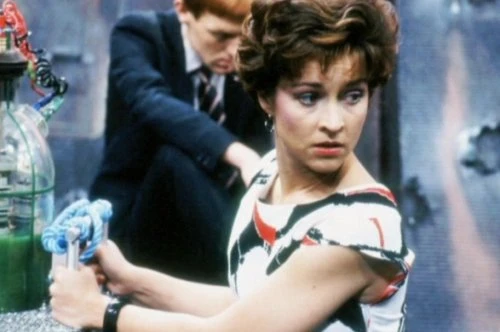
In ‘Frontios’, there is a play on the idea of eating. Range tells the Doctor that the colonists work to raise food and later tells Tegan that the Deserters – the Rets – hunt in the wastelands like animals. There is foreshadowing of Cockerill becoming a Deserter when he brings comrades food on the colony ship, and this idea is signposted in the novelisation (1985: 36) just as there was foreshadowing in the novelisations of Logopolis (of universal catastrophe, of the Master murdering individuals, and of the Watcher being the Doctor) and Castrovalva (of the collapse of the town). In ‘Frontios’, the Deserters also engage in animalistic behaviour, attacking Cockerill for his food. In ‘Castrovalva’ there is a hunt for quarry beyond the walls but there, as opposed to there being a battle between those inside and outside of the system that we find in ‘Frontios’, the feast on wild boar brings the community together and is a tribute to supposed ancestors rather than a struggle to stay alive. Range speaks from experience about the colonists working for food whereas in ‘Castrovalva’ there is a tribute to supposed ancestors who lived 500 years previously. Moreover, due to the Tractators’ interference in ‘Frontios’, the colonists are also eaten by the earth. As Turlough says of the Tractators: they are ‘the appetite beneath the ground’. So, the colonists eat and are eaten. There is an echo of ‘Visitation’ where the Terileptil Leader tells the Doctor that just as humans kill lesser species, so he kills them.
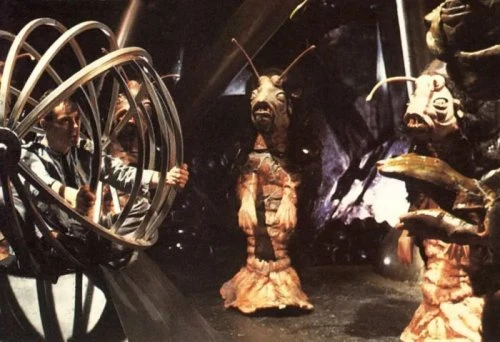
Tying in with this idea is the point that Plantagenet is kept in a cage. This is represented visually in the televised serial and is referred to in the novelisation (1985: 120). There are similarities here with Malcolm Hulke’s serial ‘Doctor Who and the Silurians’ (1970) where there is a reversal of the notion of reptiles being kept in a cage. Rather, in ‘Silurians’, man is confined to a cage by the pre-historic species, also in a cave. But in that serial the Silurians honestly believe that man has taken over their planet while the Gravis is a more malevolent figure.
The point that the colonists in ‘Frontios’ are eaten by the earth is largely kept secret. For example, at the beginning of the serial when witnessing Captain Revere’s fate, Brazen says that there is to be no mention of this to anyone. It is later revealed, that at the state funeral only a body was seen but not the face of Captain Revere. This official history harks back to Robert Holmes’ ‘The Deadly Assassin’ (1976) where a myth is concocted that Chancellor Goth died in the heroic act of killing the Master whereas in reality Goth had been the Master’s accomplice.
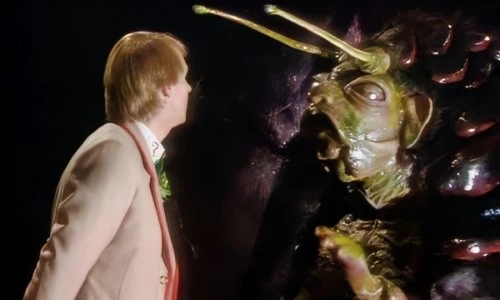
The law is a key idea in ‘Frontios’. Norna tells Turlough that Captain Revere made a law against digging under the ground for precious minerals. The Captain did this being aware of the creatures. In ‘Castrovalva’ the Portreeve was a magistrate figure overseeing the running of the town, and turned out to be the malevolent Master.
Just as there were loops in the Bidmead script-edited serial ‘Meglos’ (1980) written by John Flanagan and Andrew McCulloch (the chronic hysteresis and the rotation of the planet) and in Bidmead’s own scripts ‘Logopolis’ (where Tegan goes round and round in the TARDIS corridors) and ‘Castrovalva’ (where the town is a recursive trap), the Doctor and his companions end up going round and round in the underground tunnels in ‘Frontios’. However, the Doctor points out to Tegan that the tunnels are not all the same; it turns out that the walls of some of the tunnels have been chipped by the excavation machine, controlled by the Tractators.
A fruitful comparison can be made with Stephen Gallagher’s serial ‘Warriors’ Gate’ (1981), script-edited by Bidmead. In that serial, the Tharils are slaves of their human masters and one of the Tharils, Biroc, is used as a navigator with the purpose of guiding the ship, the Privateer, out of E-Space. The Tractators’ aim in ‘Frontios’ is to use human slaves contained in the excavation machine to make the tunnels suitable for the Tractators to be able to drive Frontios, but here with the intention of plundering different planets.
There is another comparison that can be made with ‘Castrovalva’. As Scoones also notes in the DVD Infotext, just as Castrovalva with its recursion was indebted to the work of Dutch artist M.C. Escher, the Tractators not only recalled the woodlice which infested Bidmead’s flat, but were also inspired by two 1951 lithographs by Escher: ‘Wentelteefje’ (or ‘Curl-up’) and ‘Trappenhuis’ (or ‘House of Stairs’), both featuring curled-up creatures with rigid backs. There is this connection in addition to the fact that insects were present in the Doctor Who serial ‘The Web Planet’ (1965), by Bill Strutton, and even earlier in the American anthology series The Outer Limits (1963) (see Wood 1997).
Brazen’s fate in ‘Frontios’ echoes Mergrave’s in ‘Castrovalva’. At the end of the ‘Castrovalva’, Mergrave chooses not to depart Castrovalva with the Doctor and his companions, instead bringing the Master down with the fellow Castrovalvans and with the town crumbling down with them in it. In ‘Frontios’ Brazen becomes ensnared by the excavation machine and in an act of self-sacrifice orders the Doctor to leave him.
It is also worth considering the Doctor’s characterisation as it runs through Bidmead’s ‘Castrovalva’ and ‘Frontios’. In both, the Fifth Doctor is presented wearing glasses which mark him as a learned character. In ‘Castrovalva’, for example, the Doctor reads the books, purporting to be the History of Castrovalva while in ‘Frontios’ the Doctor is more of a scientist figure.
Therefore, there are many ideas and connections with the televised serial ‘Frontios’ and its novelisation whether intended by Bidmead or not. These are in addition to those that have been previously noted. These include the point that the idea of shards from ‘Castrovalva’ surfaces in ‘Frontios’ where in the latter the Doctor’s TARDIS is scattered into pieces (see O’Day and Baston 2023). Furthermore, the real history of ‘Frontios’ has been compared with the falsified history of ‘Castrovalva’ (O’Day and Baston 2023), as has the connection between Andrew Smith’s ‘Full Circle’ (1980), script-edited by Bidmead, with its idea of the system files being classified, with ‘Frontios’ where there is at first a veil of secrecy surrounding the mysterious disappearances (see O’Day 2025). Tat Wood has also drawn out the connection between the crashed ship and base under siege in ‘Full Circle’ and ‘Frontios’ (1997: 13) and between the Rets in ‘Frontios’ and the Outlers in ‘Full Circle’ (1997: 14).
References
‘The Fact of Fiction: Frontios’ by Alan Barnes (in Doctor Who Magazine 418, 2010: 50-56), Logopolis by Christopher H. Bidmead (London: Target, 1982 [1991], Castrovalva by Christopher H. Bidmead (London: Target, 1983), Frontios by Christopher H. Bidmead (London: Target, 1985), ‘Absolutely Splendid’ by Anthony Brown, Doctor Who In-Vision 55 Castrovalva, edited by Anthony Brown (1995: 16-17), ‘Production’ in Doctor Who In-Vision 73 Frontios, edited by Anthony Brown (1997), ‘History and Fiction: The televised Doctor Who’s of Christopher H. Bidmead’ by Andrew O’Day and Lewis Baston on the Television Heaven website, 2023, ‘Evolution of the Doctor: Doctor Who’s ‘Castrovalva’ and ‘Frontios’ as Descendants of ‘Full Circle’’ by Andrew O’Day on the Television Heaven website, 2025, Frontios DVD Infotext by Paul Scoones, “We’re all in the same shell-hole” by Tat Wood, Doctor Who In-Vision 73 Frontios, edited by Anthony Brown (1997: 13-14).
Thanks go to Lewis Baston for helpful suggestions and to Tim Harris, Paul Rhodes and Paul Scoones for assisting with sources.


